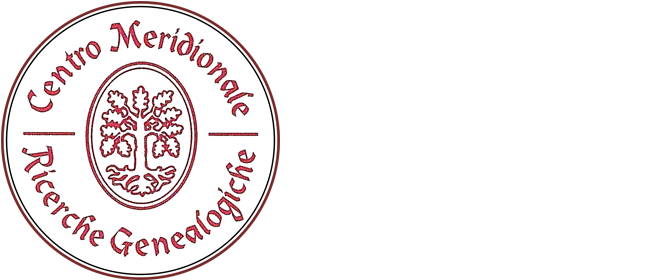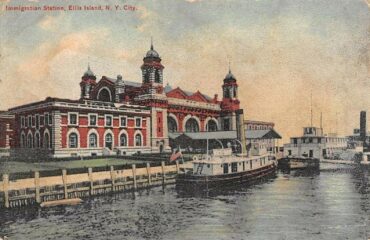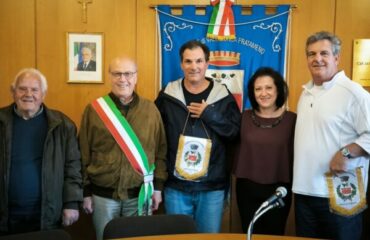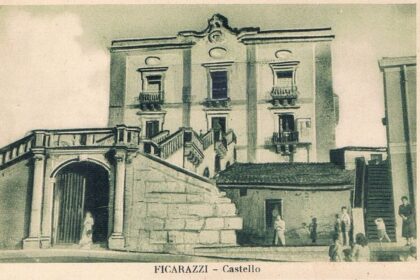
The history of Ficarazzi can be documented with certainty since 1290. Between the fifteenth and seventeenth centuries it became famous for the production of cane sugar. In this article we will offer a brief historical overview of its foundation, together with the list of families present in its first census (1751).
THE ORIGINS
The territory of Ficarazzi was already inhabited in the Phoenician-Punic age: two sarcophagi dating back to around the 5th century BC were found in the Cannita area and various other finds from the same period, now kept at the “Salinas” Archaeological Museum in Palermo.
We have no historical evidence relating to the following centuries up to the Norman age, when the entire territory was covered with woods. The history of Ficarazzi can be documented with certainty only from 1290, when his name appears for the first time in official documents.
In the 14th century the territory of Ficarazzi was owned by the La Grua family, feudal lord of Misilmeri. In this century, documentary references to Ficarazzi became more frequent as the increase in the population of Palermo caused the progressive disappearance of the forest to make way for the planting of new crops.
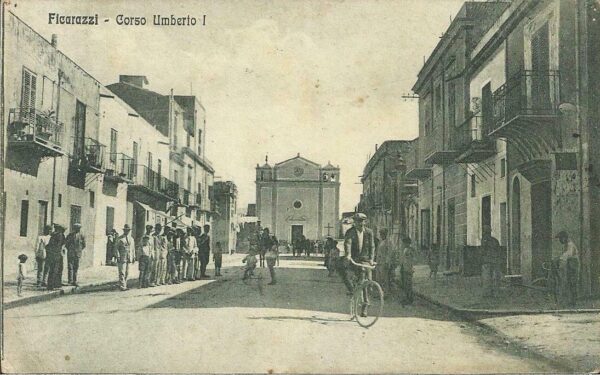
Ficarazzi: Sant’Atanasio parish church from the main street
SUGAR IN SICILY
The importation of sugar cane into Sicily is most likely due to the Arabs. In a diploma dated 1176 the presence of sugar cane mill (trappeto) in Palermo is documented. During the Swabian domination, the first official interest in this crop took place: Oberto Fallamonaca, an official at the court of Frederick II, advised the sovereign to bring people capable of making sugar to Palermo.
During the first half of the fifteenth century in various places in Sicily numerous crops of sugar cane and trappeti arose, a sign of a growing interest in this activity. Noble families and Genoese and Pisan bankers began to invest large capitals, but how was sugar produced?
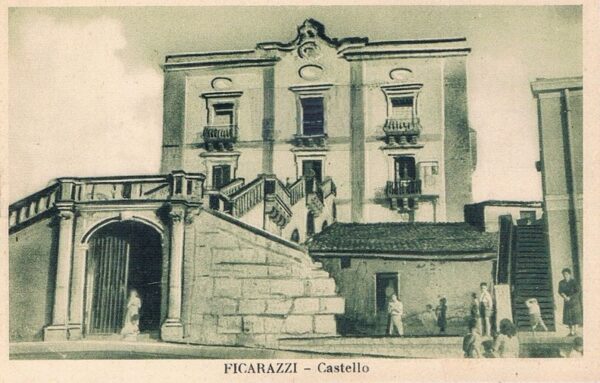
Ficarazzi: the Castle
THE PRODUCTION OF SUGAR
The cultivation of sugar cane required the prior hoeing and fertilization of the soil. Before cutting the canes, the workers defoliated them: this operation, the mundatura, as well as to free the canes from the leaves was used to cover the stumps with the leaves themselves, to shelter them from the rigors of winter. Then they brought the reeds to the trappeto where on the chianca they cut them into pieces with large knives, and then squeeze them in the millstone, whose movement was ensured by the strength of the animals. At the end of the pressing they filtered the resulting mush, then poured the juice into large copper cauldrons where they cooked it to free it from impurities. Finally, they poured the cooked juice while still hot into cone-shaped terracotta containers with a rounded tip and left it to cool and consolidate.
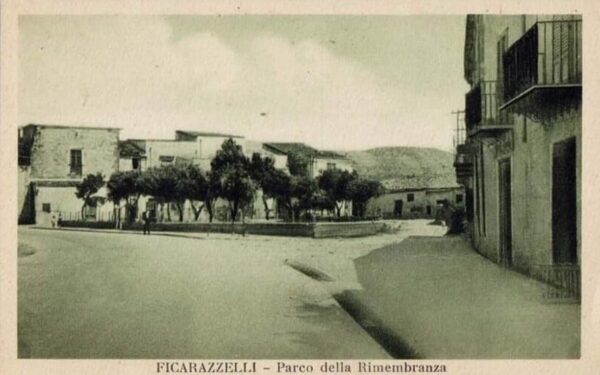
Ficarazzi: Villa dei Caduti, once Parco della Rimembranza
FICARAZZI SUGAR
The first mill planted in Ficarazzi was that of Masio Crispo in the early fifteenth century. He was soon followed by others, in particular by Pietro Speciale, lord of Calatafimi and Alcamo, son of the viceroy Nicola. In 1468 he had a fortified farm built according to the custom of that period, surrounded by walls and dominated by an imposing square tower. The farm also included accommodation for the staff, stables, warehouses and a church, as well as of course the trappeto.
Furthermore, an imposing aqueduct on the Eleuterio river and various canalization works were built, because the cultivation of sugar cane required a significant water supply.
The sugar industry had an initial period of great splendor, but began to decline in the mid-sixteenth century with the progressive indebtedness of the financiers.
In 1610 the ownership of the Ficarazzi trappeto passed to the Theatine Fathers of Palermo, who continued the sugar production activity, but it was definitively ceased in 1690.
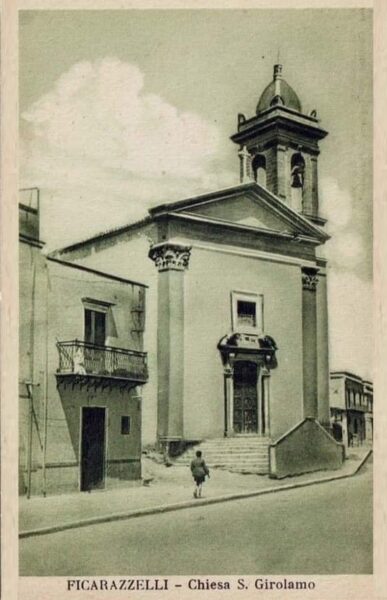
Ficarazzi: San Girolamo parish church (secc. XVII-XIX)
THE BIRTH OF THE NEW VILLAGE
To settle the debts, the treasury confiscated the fief of Ficarazzi, so in 1721 the Marquis Luigi Gerardo Giardina de Guevara, bought it at auction for 50,000 scudi, and on November 9th, 1733 obtained the investiture of the title of Prince of Ficarazzi.
The prince divided his lands into different locations which he then granted in emphyteusis to the few inhabitants and to new settlers and he built a public fountain and a new church, completed in 1732 and erected a parish in 1734, with the title of Sant’Atanasio. In addition, he had the Speciale tower enlarged and transformed into a holiday residence; to bridge the gap between the tower and the underlying street level, he had a spectacular monumental staircase built.
FICARAZZI FAMILIES IN ITS FIRST CENSUS (1751)
In 1751 the population of Ficarazzi consisted of 135 fires (families) for a total of 487 inhabitants. The surnames of the families were:
Aiello, Albanese, Alessi, Alongi, Arena, Basile, Battaglia, Becchino, Biangiardi, Bisconti, Blasotto, Bonaccurso, Bongiovanni, Bono, Brigaglia, Brogna, Bullaro, Cacciatore, Calabria, Carbonaro, Castello, Castrogiovanni, Centanni, Cilluffo, Cimino, Cinà, Costa, D’Agati, D’Alba, D’Arini, Dell’Aria, Di Dio, Di Ganci, Di Giovanni, Di Liberto, Di Pace, Di Pasquale, Eccellenti, Faraone, Fego, Ferraro, Figlia, Floria, Gebbia, Gerardi, Giacalone, Giammarresi, Giugno, Greco, Gucciardo, Guagliardo, Gulotta, Imperatore, La Cavera, La Giorgia, La Licata, La Malfa, La Mendola, La Piana, Latino, Lauricella, Licciardi, Liotta, Lo Bianco, Lo Cascio, Lombino, Lo Monaco, Lo Monte, Lo Proto, Lo Scecco, Macchiarella, Malizia, Martinello, Matraxia, Mazara, Medici, Menga, Merendino, Messana, Mezzatesta, Migliore, Mineo, Mistretta, Monteleone, Mucera, Navetta, Orlando, Patinella, Pedone, Pennino, Perlongo, Pinetto, Pipia, Pollara, Provenzano, Puleo, Quartuccio, Rinaudo, Rizzo, Savarino, Segreto, Sicurello, Simonetta, Smiriglio, Tempra, Tesauro, Tumminello, Valenti, Viola, Zarcone.
If your family comes from Ficarazzi and you would like to know its history, contact us!

 Italiano
Italiano 